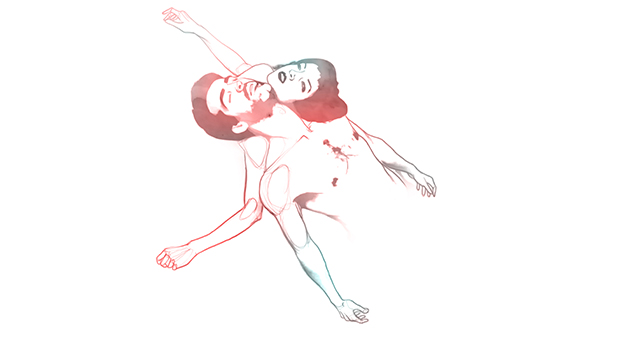Melbourne International Animation Festival 2014: Interview with French animator, Nadia Micault
SPECIAL guest of the 2014 Melbourne International Animation Festival, Nadia Micault, will be in town to present her animated film, Sonata. Yuzuha Oka interviewed the French animator and touched on the film and Micault’s creative process.
“For a long time, I thought I was probably a bit abnormal and a little creepy,” confessed French animator Nadia Micault.
Her film Sonata, isn’t creepy but it is an abstract piece of work that will be showcased at the Melbourne International Animation Festival (MIAF) as the official opening film of the festival. It will also screen among the first batch of International Program animations as part of a repeat viewing.
Speaking to Meld Magazine, Ms. Micault will be in Melbourne as a special guest of the festival, introducing Sonata and taking part in the general going-ons of MIAF.
Having never visited Australia, Micault said when she was told that Sonata would be the opening of the festival, she wasn’t quite sure how people would react to her film.
“I just want people to have a good time while watching it. If they do, it’s a success for me,” said Micault with modesty.
Appreciating the film, however, may have its setbacks as Micault understands and acknowledges the difficulty of making a film without an explicit story line.
“When you make a film like Sonata, [one that’s non-linear and arty], you can’t really expect that people will obviously understand and love the work. It’s kind of a bargain.”
Sonata is an artistic non-verbal animation where background sketch is minimised. Projecting everything against a clear white screen, the movement of the human body is the sheer focus of Sonata. Each motion of muscle is closely depicted as the characters write and dance.
This distinctive style, Micault says, is derived from her obsession with morphology and movement.
“I do watch closely how some people move. In my mind, I strip some people from flesh to rebuild a skeleton in my imagination, then, I imagine the muscles.”
From there, the French animator lets her imagination wander around and asks herself all sorts of questions. What kind of physical activity do these people have? Do they have pain somewhere? What kind of job they do? Are they physically balanced?
“That little process creates lots of stories in my world. I do it naturally all the time,” said Ms Micault.
As she began telling others about her habits, she realised it was rather a personal way to map things around her. Even though she felt herself to be abnormal, she gradually came to notice that people enjoyed her curious mapping. And what better way to demonstrate that, she thought, than by putting her thoughts into an animated film.
As one can imagine with a title like Sonata, music plays a crucial part of her film.
“The whole film is a mental picture of the Sonata for Solo Cello by Ligeti. The whole thing is built and wrapped around the music recording we made of Dima Tsypkin, the cellist.”
A former student of the cello, it came naturally for Micault to choose a solo cello piece for the film.
Talking about how music influences the animation and vice versa, Micault expresses that her natural talent to “picture” the music helped in the creative process of the Sonata.
“I started storyboarding; drawing the music and some kind of key frames. Then I decomposed, what seemed to me, the main movements of the music piece; gave direction for the story to be built.”
From there, she and choreographer, Fernando Caballero Carrion, worked closely to develop some semblance of story within the through dance choreography (which is enacted by the characters in the film).
“We built the story very slowly, comparing, balancing our story with the dance and the music. We never lost touch with one or the other.”
Though it took more than a year for her to complete Sonata, Ms. Micault expressed that the most difficult thing she encountered while working on the film was to “not lose sight of the original impulse.”
“It’s hard to stay focused and not yield to the desire to enrich the original project with things that are barely related. I’ve often watched the first drawings and mood boards I made at the beginning.”
On what advice she would give to aspiring animators of the future, based on the experience of making Sonata, Micault maintains that sticking to your instincts and surrounding yourself with quality people will help.
“Talk about what you know. What makes the difference is your difference.”
Nadia Micault is a special guest of the Melbourne International Animation Festival. Her animated film, Sonata, is the opening film of the festival and can also be seen in the International Programs 1 selection of animations at MIAF.
Micault will also be appearing at presentations and discussions throughout the festival. For more details on these, refer to the Melbourne International Animation Festival’s official website.




